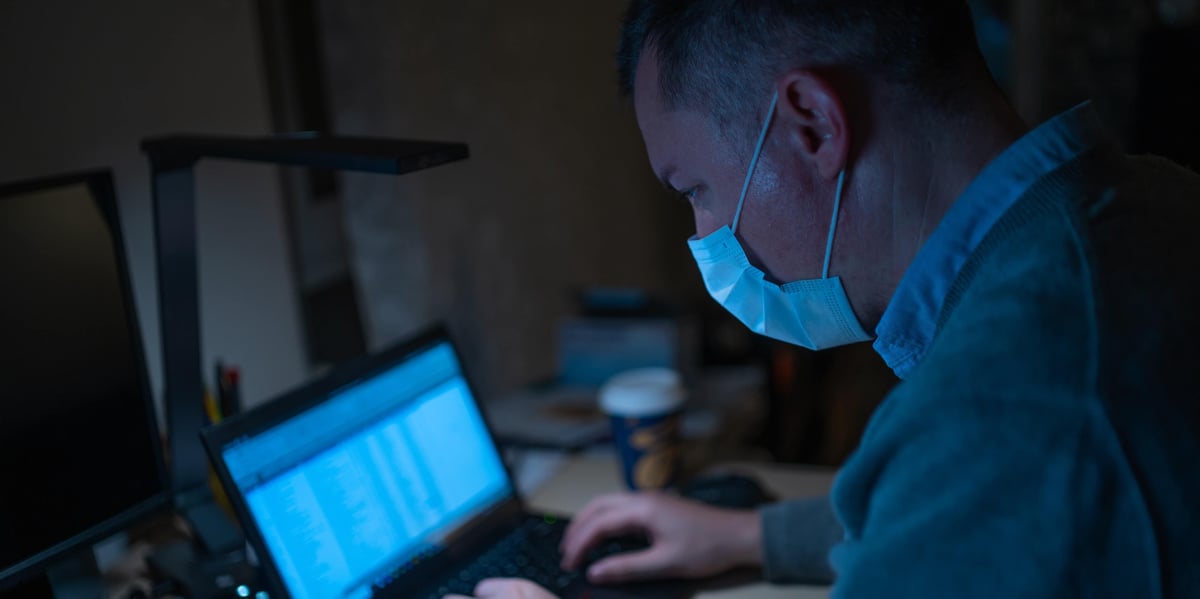RPA and COVID-19: How Software Robots Are Helping Companies Put Employee Health First
Share at:

David Neo is global services leader for the Asia Pacific (APAC) region at UiPath.
At the UiPath Beijing office, multiple WeChat notifications start pinging across the work floor. It’s a reminder for everyone to fill out the daily health survey—a quick and easy process that requires only a few minutes.
UiPath is one of many companies throughout the APAC region following government advisories to document employees’ daily body temperatures. Many governments in the APAC region have advised companies to document employees’ temperatures each day as they enter the office or employees working from home to report their travel plans and any health symptoms to their employers.
For those who missed the alert in the UiPath Bejing office, it sounds again an hour later—prompting employees to fill out the health form as soon as possible. With the current coronavirus (COVID-19) outbreak reaching fever pitch, there is a pressing need for everyone to update their health status daily.
Behind the scenes, the large volume of health data (from the surveys) is collected, organized into reports, and analyzed by an unseen software robot. This robot can be a critical timesaver, improving the health screening procedures for companies in China—the country at the epicenter of the COVID-19 virus that has spread worldwide.

In the three months since news first surfaced of the epidemic, COVID-19 has spread to more than 50 countries, with almost 84,000 people infected and over 2,800 dead as of February 28, 2020. The global economy is also suffering, with business dropping drastically in a variety of industries, from tourism to logistics. International Monetary Fund (IMF) Chief Kristalina Georgieva said the virus is the “most pressing uncertainty” facing the world economy right now. The IMF is “downgrading global-growth projections because of the virus.”
It’s important to note that we’re better prepared to address global healthcare issues today than we were in 2003, when the Severe Acute Respiratory Syndrome coronavirus (SARS-CoV) epidemic caused global chaos.
Sixteen years after the SARS-CoV epidemic, measures were quickly rolled out to help stem the spread of the COVID-19 virus. Those measures included implementing quarantines, travel restrictions, and temperature checks at airports, train stations, shopping malls, and more across Asia. Some countries and cities closed their borders to Chinese visitors, including Hong Kong, which suspended the high-speed rail service between the city and mainland China, as well as all cross-border ferry services.
Technology has also developed at a rapid pace post-SARS-CoV to help reduce the spread of diseases. One tool the world now has available is the new UiPath Health Screening Bot, which has been launched in several APAC countries. With our extensive expertise in applying Robotic Process Automation (RPA) to solve challenging business and societal problems, we created the Health Screening robot to make company health checks less tedious. The robot sends and collect questionnaires through software and can be utilized or customized by human resources (HR) staff to suit their organization’s needs. For those who do not require customization, there are ready-made templates that can be easily implemented. This assists geographically dispersed organizations that have limited resources, allowing them to benefit from speedy implementation.
Want to use the robot for your own organization? Get the UiPath Health Screening Bot today.
An automated response to a health crisis
Our Health Screening robot provides a solution to workplaces in Asia, where an increasing number of organizations have started allowing employees to work from home to minimize contact between staff. Minimizing contact between staff members is critical in helping to reduce the risk of infection.
In an even stricter measure, the Singapore government has announced a "stay-home notice," which forbids its citizens and long-term pass holders who have returned from mainland China from leaving their homes for 14 days. While it is safer to work from home, keeping track of employees’ health in such an arrangement can be a resource-intensive task for HR—especially in more sizable companies, including UiPath.
Previously, UiPath staff were expected to fill out a form daily to update their health status. They had to manually check their email inboxes, which was a hassle and the form may be lost in their sea of emails. Sometimes, employees might forget to complete the survey, making it time consuming for HR to remind employees to submit their surveys. Delays in submission may also inadvertently result in compliance lapses.
But today, the robot sends out a survey and keeps track of who has (and hasn’t) completed the survey. The bot will also proactively follow up every hour via various communication tools such as Slack, WeChat, and WhatsApp. This frees up time for HR staff members to work on other tasks, while also ensuring a safe work environment.
Using automation, the health status of all employees can be captured in a systematic way. The robot alerts employers to anyone with unusually high body temperatures, which helps companies react quicker to manage and remediate the situation.
At the same time, UiPath customers such as AIA, Beijing Hyundai Information Technology, Deloitte, Dongfeng Nissan, and Doosan Group have expressed that UiPath provides enterprises with professional and reliable solutions during the COVID-19 epidemic. More importantly, from a long term perspective, companies have found an end-to-end solution that helps automate manual operations and connects internal and external applications—the UiPath Enterprise RPA Platform.
Keeping data well organized
To help make better sense of the data from the daily body temperature surveys that employees in APAC currently fill out, the Health Screening Bot organizes all the data in a summary report at the end of day. The data summaries are presented in an easy-to-read visual such as pie and bar charts – making it easy to see where employees are working (at home or in the office) and their temperatures. And, because the process is automated, HR employees' tasks of reviewing the results and reporting any anomalies becomes much easier.
By implementing this robot, we aim to simplify proactive health measures for companies, allowing companies to focus on the more important battles, such as ensuring the welfare of employees and keeping operations going. Time saved from tedious tasks can be better utilized to help you navigate your company through these turbulent times. With UiPath robots, we continue to drive innovation and corporate compliance to keep people and companies healthy and productive—even in times of global health epidemics. We hope that our small contribution can help bring about faster response to prevention and treatment now and in the future.

Senior Director, Professional Services (Emerging Markets), UiPath
Get articles from automation experts in your inbox
SubscribeGet articles from automation experts in your inbox
Sign up today and we'll email you the newest articles every week.
Thank you for subscribing!
Thank you for subscribing! Each week, we'll send the best automation blog posts straight to your inbox.



